|
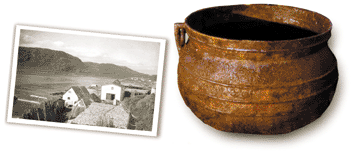
Self-Guided Walking Tour
A self-guided walking tour of Conche and Crouse takes you to artefacts and historic sites spread throughout the community. Starting by the water in Conche, the stops include:
 A French barking pot used to preserve lines and sails. A French barking pot used to preserve lines and sails.
 A traditional harbour lighthouse. A traditional harbour lighthouse.
 The remains of a World War II Boston BZ277 plane crash. The remains of a World War II Boston BZ277 plane crash.
 The Casey Store, a Registered Heritage Structure - one of the oldest fisheries buildings remaining on the French Shore. The Casey Store, a Registered Heritage Structure - one of the oldest fisheries buildings remaining on the French Shore.
 Martinique Bay, the site of a 1707 confrontation between English warships and the trapped French fleet – a designated Site of Historic Significance. Martinique Bay, the site of a 1707 confrontation between English warships and the trapped French fleet – a designated Site of Historic Significance.
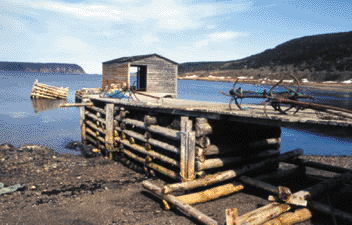
 Crouse Beach – a half-buried flat pebble beach that was the site of a vast French codfish drying operation in the 19th century. The beach offers a view of picturesque wharves in Southwest Crouse. Crouse Beach – a half-buried flat pebble beach that was the site of a vast French codfish drying operation in the 19th century. The beach offers a view of picturesque wharves in Southwest Crouse.
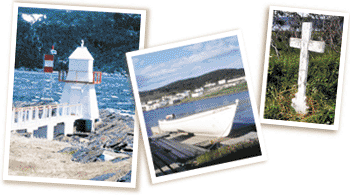
 Captain Coubelongue Trail – Located in Crouse, a wooden cross marks the beginning of an old French trail that leads to French fishing rooms, currently a Memorial University of Newfoundland archeological dig. Captain Coubelongue Trail – Located in Crouse, a wooden cross marks the beginning of an old French trail that leads to French fishing rooms, currently a Memorial University of Newfoundland archeological dig.
|
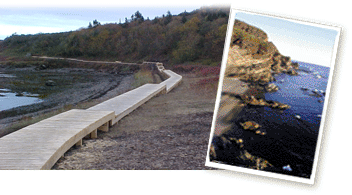
Hiking Trails
The landscape around Conche and Crouse is crisscrossed with about 12 km of rough hiking trails and newer boardwalks. The trails offer spectacular lookouts along high cliffs with broad views of the neighbouring islands and landforms. A trail map is available at the French Shore Interpretation Centre.

Boat Tours
A boat tour can be arranged to visit the dramatic Grey Islands, once the site of an important fishing station for both the French and the English. Little remains of the outport resettled in the 1960s. Northeast Crouse is a resettled community also accessible by boat.
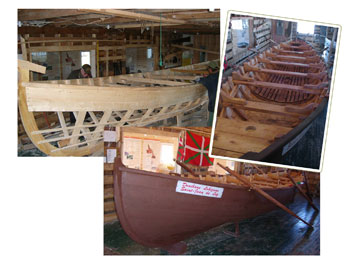
Chaloupe Exhibit
The History of the Chaloupe...
The chaloupe is a vessel of Basque origins. It was used in Newfoundland for whale hunting and cod fishing until the introduction of the dory, a light and handy vessel that revolutionized the cod fishery.
From eight to eight and a half meters in length with a flat stern to facilitate the loading of fish into the vessel, the chaloupe is described in the Dictionary of Newfoundland English, as shallop: "A large, partly-decked boat, rigged with lug-sails and used in the cod and seal fisheries".
In Newfoundland, the chaloupe has long since disappeared and nobody remembered how to build it. However, this knowledge is still well in use in the Basque Country. In 2004, through the effort of the 2004 Society, an association of Basque Maritime Heritage, Itsas Begia (http://perso.wanadoo.fr/itsasbegia/ ) from Ciboure, came to Newfoundland and shared its ancestral knowledge with Newfoundlanders.
Three chaloupes were built, here in Conche, in Port au Choix and in La Scie.
For a visit to the chaloupe exhibit in Conche please inquire at the French Shore Interpretation Centre.
|